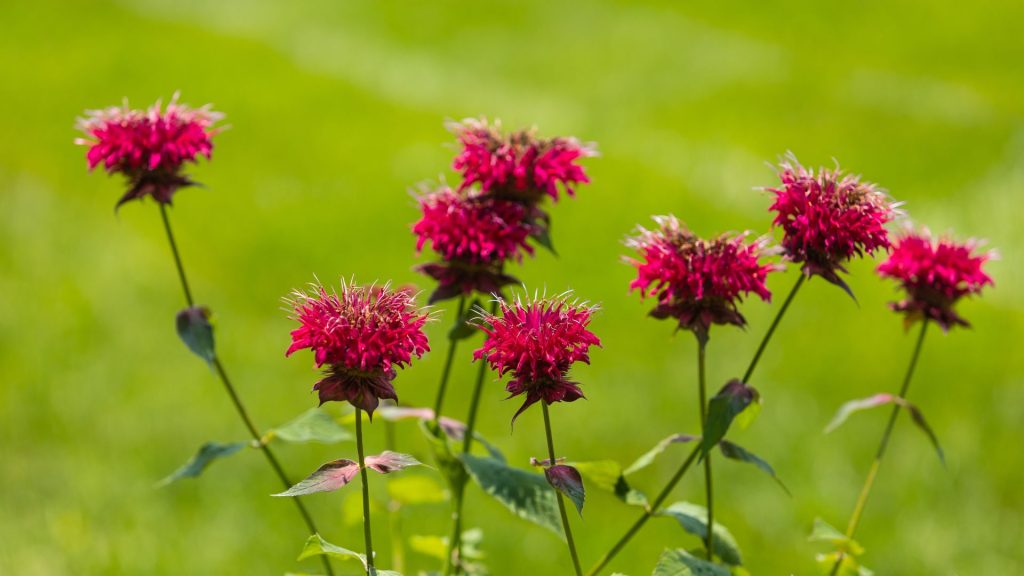When creating a garden it is a great idea to have flowers that attract pollinators. And the gorgeous bee balm, also known as the bee balm monarda plant will certainly bring a lot of beauty and colors to your garden. So today I will give you some information about this plant and some tips for bee balm care.
A native of North America the bee balm plant thrives in woodland areas. As I mentioned above, it is known also as Monarda which is its botanical name. The bee balm plant is very attractive to pollinators, hummingbirds, bees, and butterflies. And in the fall and winter, their seed heads end up attracting birds also. The flower of the bee balm resembles daisies in terms of shape, having tube-like petals.
Now you might want to know what colors does bee balm comes in, you can find them in shades of pink, red, purple, and white. They are perennial plants which means that they will keep returning every year to bring color and beauty to your garden.
Characteristics of Bee Balm Plant
Bee Balm Plant, also known as Monarda didyma, is an herbaceous perennial plant that belongs to the mint family. It is native to North America and is widely cultivated for its showy, vibrant flowers and medicinal properties. Here are some of the physical characteristics of Bee Balm Plant:
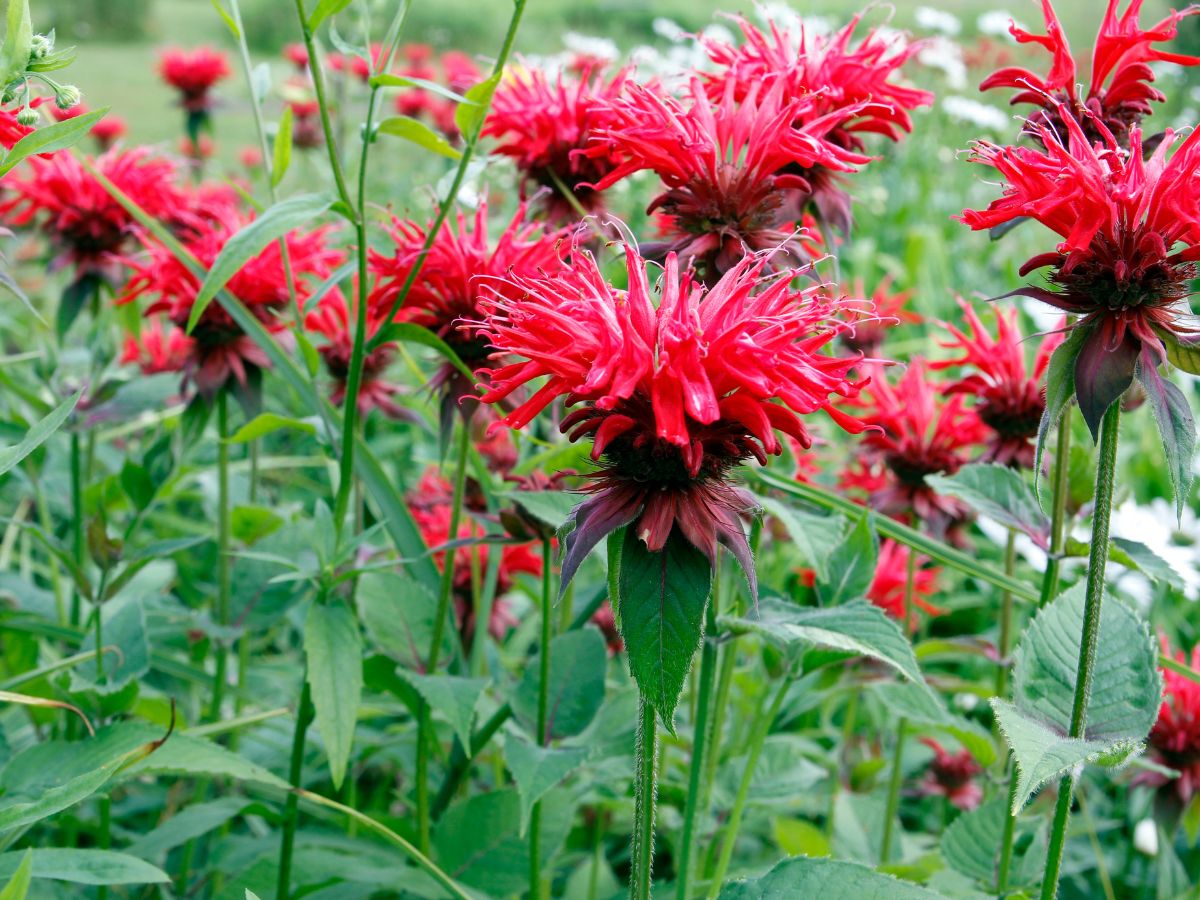
- Height: Bee Balm Plant grows up to 3-4 feet tall and 2-3 feet wide.
- Leaves: The plant has lance-shaped, green leaves with a slightly serrated edge. The leaves are strongly aromatic when crushed.
- Flowers: Bee Balm Plant produces tubular-shaped, brightly colored flowers that bloom in clusters at the top of the stems. The flowers can range in color from red, pink, lavender, and white.
- Bloom Time: The flowers bloom in the summer, typically from June to September.
- Stem: The plant has square stems that are hairy and rigid.
Types of Bee Balm Plant
There are several different types of Bee Balm Plant, each with its own unique characteristics. Here are some of the most common types of Bee Balm Plant:
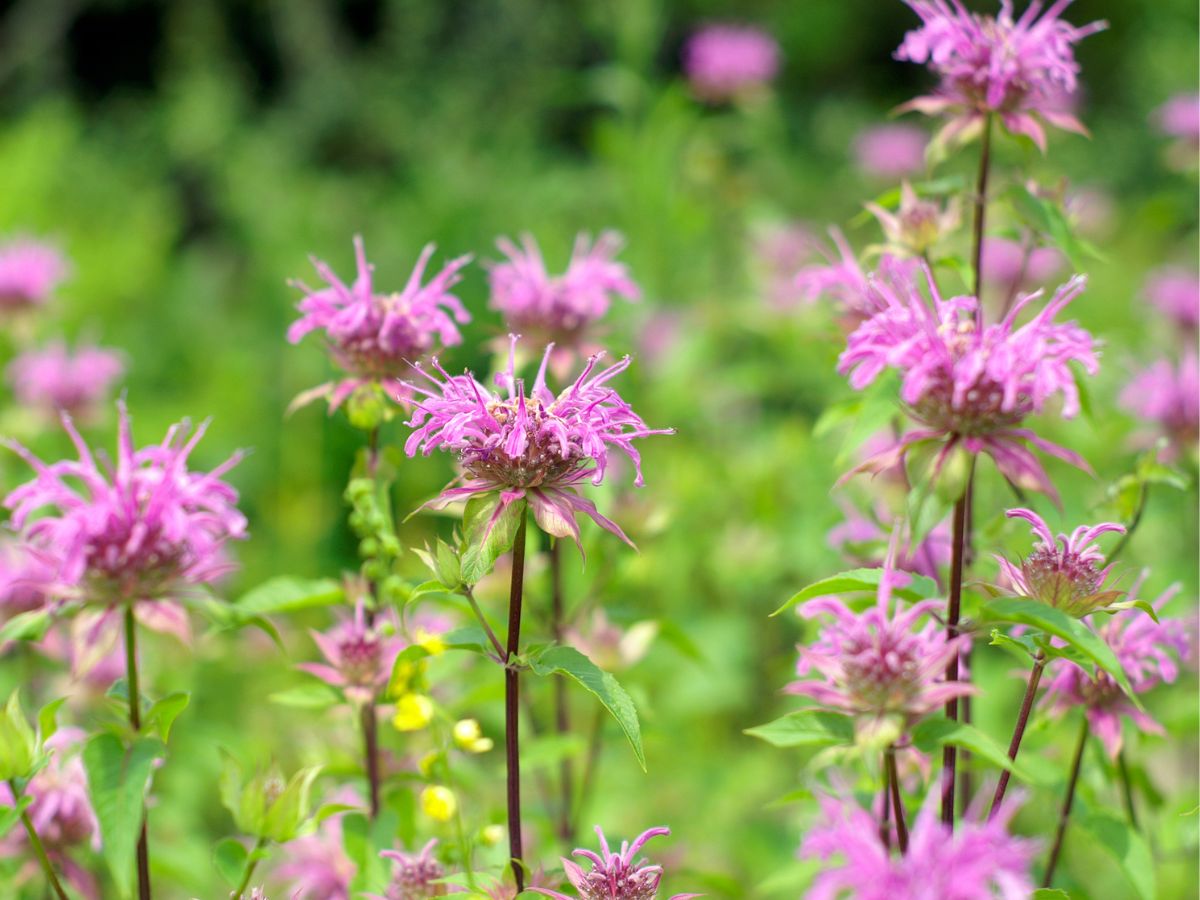
- Monarda didyma: This is the most popular variety of Bee Balm Plant and is known for its bright red flowers.
- Monarda fistulosa: This variety has purple-pink flowers and is commonly found in the wild.
- Monarda citriodora: This variety has pink flowers and has a strong lemon scent.
- Monarda punctata: This variety has yellow flowers and is commonly known as Spotted Bee Balm.
Each type of Bee Balm Plant has its own unique appearance and growing requirements. Choosing the right type for your garden will depend on your preferences and the specific growing conditions in your area.
How to Growing Bee Balm Plant
Bee Balm Plant is a hardy, easy-to-grow herb that produces attractive flowers and is well-known for its medicinal and culinary properties. It is a great addition to any garden, and in this section, we will provide detailed instructions on how to grow Bee Balm Plant successfully.
Choose a Location
Choose a location that receives full sun or partial shade. Bee Balm Plant prefers well-draining soil, but it can grow in most soil types. It is essential to ensure that the soil is rich in organic matter and has a pH between 6.0 and 7.0. Also, make sure that the planting area is not too windy, as the plant can be easily damaged in strong winds.
Planting Seeds or Transplants
Bee Balm Plant can be propagated by either seeds or transplants. Seeds should be sown directly into the garden bed in the spring or fall. Plant the seeds at a depth of 1/8 inch and space them about 18-24 inches apart. If using transplants, they can be planted in the spring after the last frost date or in the fall. Dig a hole twice the size of the root ball and place the plant in the hole, ensuring that the top of the root ball is level with the soil.

Watering
Bee Balm Plant requires regular watering, especially during the hot summer months. It is essential to ensure that the soil is kept moist, but not waterlogged. Water deeply once a week, or more frequently if the soil is dry.
Mulching
Adding a layer of organic mulch, such as shredded bark, leaves, or compost, around the base of the plant can help to retain moisture in the soil, prevent weeds from growing, and provide the necessary nutrients to the plant.
Fertilization
Bee Balm Plant does not require heavy fertilization. However, you can add a balanced fertilizer in the spring to promote healthy growth. Be careful not to over-fertilize, as this can lead to excessive foliage growth and fewer flowers.
Pruning
Prune Bee Balm Plant regularly to promote bushy growth and prevent it from becoming too leggy. Cut back the stems by one-third in the late spring or early summer. This will also help to promote more blooms and prevent the plant from getting too tall.
Dividing the Plant
Bee Balm Plant tends to spread quickly and can become overcrowded. To prevent this, divide the plant every three to four years in the spring or fall. Dig up the plant and separate the root ball into several sections. Replant the sections in well-prepared soil, spacing them about 18-24 inches apart.
How to Propagation and Reproduction Bee Balm Plant
Propagation and reproduction of Bee Balm Plant is relatively easy and straightforward. The plant can be propagated by seed, cuttings, or division. In this section, we will provide detailed information on the different propagation methods.
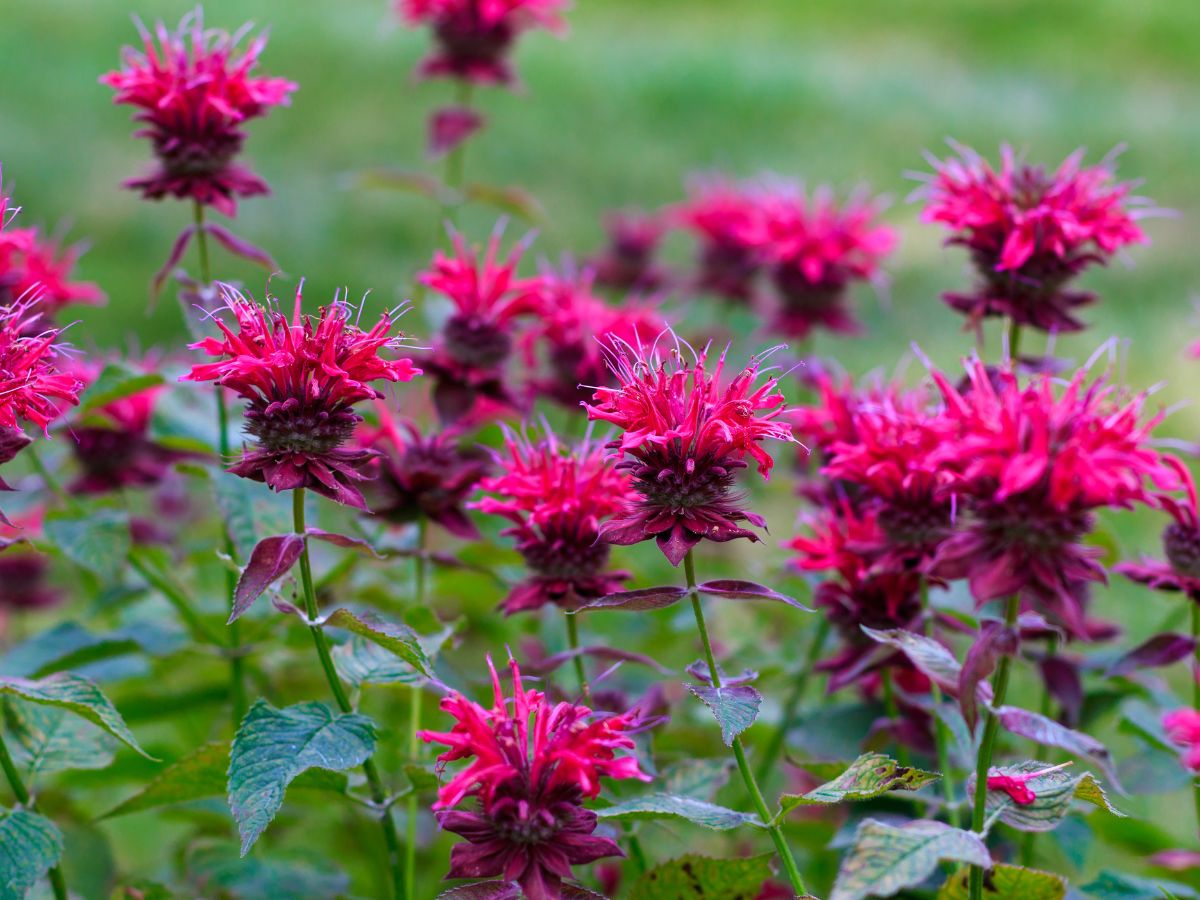
Seed Collection and Storage
Bee Balm Plant produces small, black seeds that can be collected once the flowers have faded and the seed heads have turned brown. Collect the seed heads and allow them to dry out in a cool, dry location. Once they have dried out, remove the seeds from the seed head and store them in a cool, dry location in an airtight container. The seeds can remain viable for up to three years.
Cutting Propagation
Cuttings can be taken in the late spring or early summer. Take a 4-6 inch cutting from the stem of the plant, making sure to cut below a leaf node. Remove the lower leaves, leaving only a few leaves at the top of the cutting. Dip the cutting in rooting hormone and plant it in a pot filled with a mixture of perlite and peat moss. Place the pot in a warm, sunny location, and keep the soil moist. The cutting should root within a few weeks.
Dividing Bee Balm Plant
Bee Balm Plant can be divided every three to four years in the spring or fall. Dig up the plant and carefully separate the root ball into several sections using a sharp knife or garden fork. Each section should have several shoots and a healthy root system. Replant the sections in well-prepared soil, spacing them about 18-24 inches apart.
Propagation is an excellent way to increase the number of Bee Balm Plant in your garden. By following these simple steps, you can propagate and reproduce Bee Balm Plant using seed collection and storage, cutting propagation, and dividing the plant.
Benefits and Uses of Bee Balm Plant
Bee Balm Plant is a versatile plant that offers a range of benefits and uses. Here are some of the most common uses of Bee Balm Plant:
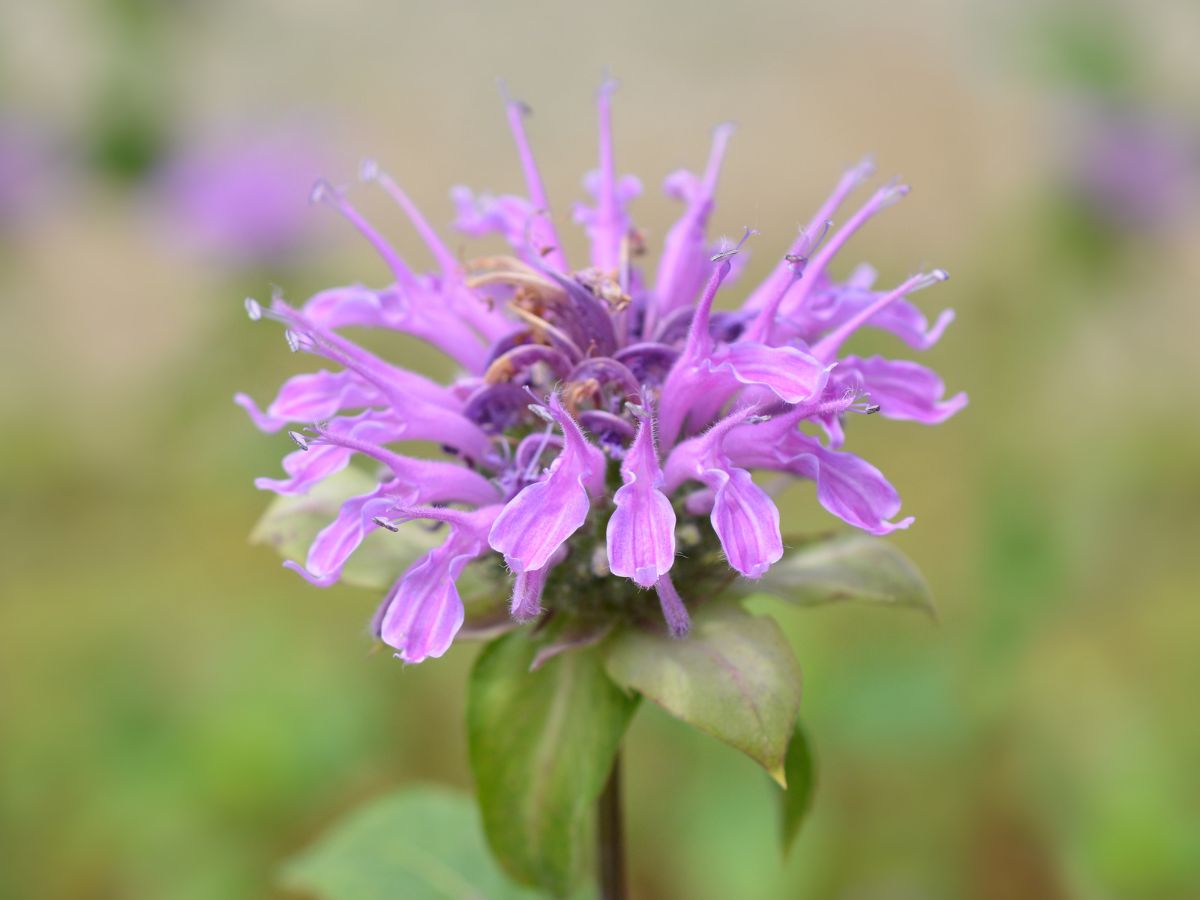
Medicinal uses of Bee Balm Plant
Bee Balm Plant has been used for centuries by indigenous cultures for its medicinal properties. It contains antiseptic, antibacterial, and anti-inflammatory compounds that make it an effective natural remedy for a range of ailments. Some of the medicinal uses of Bee Balm Plant include:
- Soothing sore throats: Bee Balm Plant can be used to make tea, which is effective in treating sore throats, coughs, and colds.
- Reducing fever: The plant has diaphoretic properties that help to reduce fever by inducing sweating.
- Treating digestive issues: Bee Balm Plant is effective in treating digestive issues like gas, bloating, and stomach cramps.
- Relieving headaches: The plant’s aromatic compounds have a calming effect on the nervous system and can help to alleviate headaches and migraines.
Culinary uses of Bee Balm Plant
In addition to its medicinal uses, Bee Balm Plant is also commonly used in cooking. The plant has a unique flavor that is reminiscent of oregano and mint, with a slightly citrusy taste. Some of the culinary uses of Bee Balm Plant include:
- Flavoring teas and beverages: Bee Balm Plant can be used to add flavor to teas and other beverages.
- Enhancing the flavor of meats: The plant’s aromatic compounds make it an excellent seasoning for meats like chicken, pork, and beef.
- Adding flavor to salads: The plant’s leaves and flowers can be used to add flavor and color to salads.
Attracting bees, butterflies and other pollinators to your garden
Bee Balm Plant is an excellent plant for attracting pollinators like bees, butterflies, and hummingbirds to your garden. The plant’s brightly colored flowers and sweet fragrance make it irresistible to these creatures. By planting Bee Balm Plant in your garden, you can help to support local pollinator populations and promote a healthy ecosystem.
Bee Balm Plant is a valuable addition to any garden. Whether you’re interested in its medicinal properties, culinary uses, or ability to attract pollinators, there are plenty of reasons to consider growing Bee Balm Plant.
Pest and Disease Control
Bee Balm Plant is a relatively low-maintenance plant that is not usually affected by pests and diseases. However, there are some common pests and diseases that can affect the plant. In this section, we will discuss these pests and diseases and the methods for controlling them.
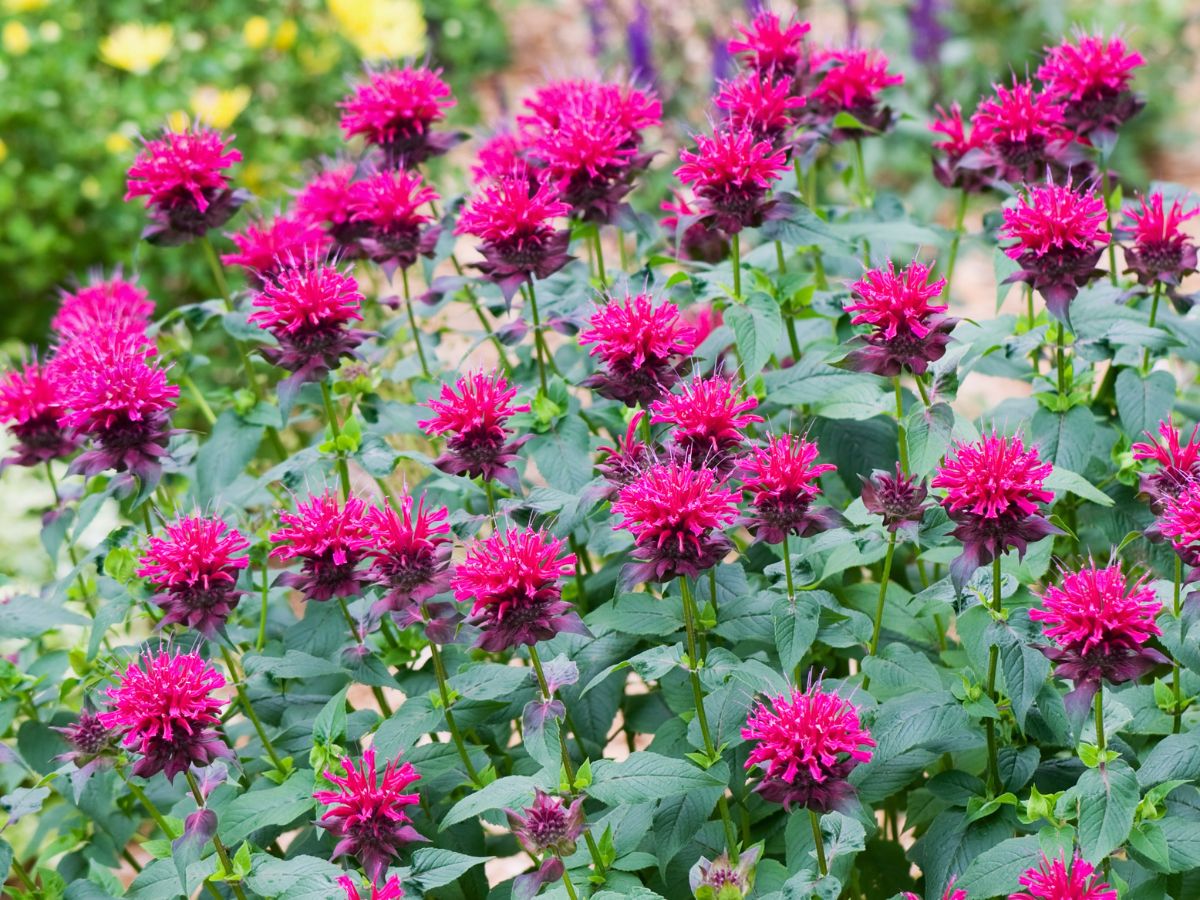
Common Pests
Aphids, spider mites, and whiteflies are the most common pests that affect Bee Balm Plant. These pests can cause damage to the leaves and stems of the plant, leading to stunted growth and reduced flower production.
Natural Control Methods
One of the most effective ways to control pests on Bee Balm Plant is to attract natural predators such as ladybugs and lacewings. These insects are natural predators of many common garden pests and can help to keep populations in check. Additionally, spraying the plant with a mixture of water and dish soap can help to control pests.
Chemical Control Methods
If natural control methods are not effective, chemical control methods can be used as a last resort. Insecticidal soap, neem oil, and pyrethrin-based insecticides can be used to control pest infestations on Bee Balm Plant. However, it is essential to follow the manufacturer’s instructions carefully and avoid using these products on the plant when it is in bloom, as they can harm pollinators.
Common Diseases
Powdery mildew and leaf spot are the most common diseases that affect Bee Balm Plant. These diseases can cause damage to the leaves and stems of the plant, leading to reduced growth and flower production.
Natural Control Methods
Practicing good garden hygiene, such as removing fallen leaves and debris, can help to prevent the spread of disease. Additionally, spraying the plant with a mixture of baking soda and water can help to control powdery mildew.
Chemical Control Methods
If natural control methods are not effective, chemical control methods can be used as a last resort. Fungicides such as copper sulfate can be used to control powdery mildew and other fungal diseases on Bee Balm Plant. However, it is essential to follow the manufacturer’s instructions carefully and avoid using these products on the plant when it is in bloom, as they can harm pollinators.
Bee Balm Plant is a relatively low-maintenance plant that is not usually affected by pests and diseases. However, if pest or disease problems do occur, there are natural and chemical control methods that can be used to address them. By practicing good garden hygiene and using these control methods, you can keep your Bee Balm Plant healthy and thriving.
Frequently Asked Questions
What is Bee Balm Plant?
Bee Balm Plant, also known as Monarda, is a herbaceous perennial plant that is native to North America. It produces brightly colored flowers in shades of red, pink, and purple and is popular among gardeners and wildlife enthusiasts for its attractiveness to pollinators such as bees, butterflies, and hummingbirds.
How do I care for Bee Balm Plant?
Bee Balm Plant prefers well-draining soil and full sun to partial shade. It requires regular watering during the growing season and benefits from fertilization with a balanced, all-purpose fertilizer. Deadheading spent flowers can encourage more blooms and prevent self-seeding.
Can I use Bee Balm Plant for culinary purposes?
Yes, Bee Balm Plant has a citrusy, minty flavor that makes it a popular addition to teas, salads, and other culinary dishes. The leaves and flowers can be used fresh or dried and stored for later use.
How can I propagate Bee Balm Plant?
Bee Balm Plant can be propagated by seed, cuttings, or division. Seed collection and storage can be done once the flowers have faded and the seed heads have turned brown. Cuttings can be taken in the late spring or early summer, and division can be done every three to four years in the spring or fall.
What are some common pests and diseases that affect Bee Balm Plant?
Aphids, spider mites, and whiteflies are common pests that can affect Bee Balm Plant, while powdery mildew and leaf spot are common diseases. Natural control methods such as attracting natural predators and spraying with water and soap can be effective in controlling pests. Fungicides and insecticides can be used as a last resort if natural control methods are not effective.
Conclusion
Bee Balm Plant is a beautiful and versatile herbaceous perennial that can add color and attract pollinators to any garden. With its various medicinal and culinary uses, it is a valuable addition to any herb garden.
Growing Bee Balm Plant is relatively easy, and with proper care, it can thrive for many years. By following the tips and techniques outlined in this article, you can successfully grow, propagate, and care for Bee Balm Plant.
While there are some common pests and diseases that can affect the plant, there are natural and chemical control methods that can be used to address them. Overall, Bee Balm Plant is an excellent choice for any gardener looking to add a beautiful and beneficial plant to their garden.


